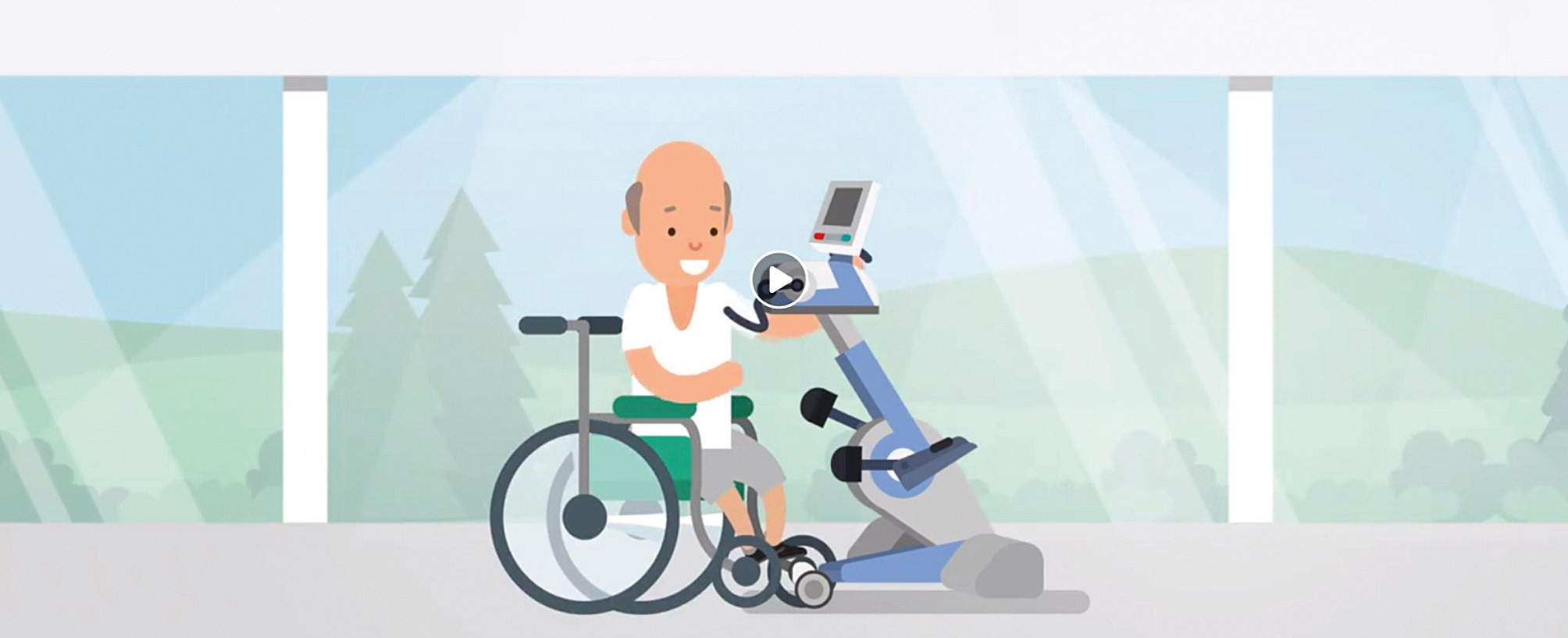
THERAPY-Magazin
Just stay FITT!
Discover how the FITT principle (Frequency, Intensity, Time, Type) helps structure and control strength and endurance training in neurorehabilitation—boosting muscle performance and recovery.

Jakob Tiebel
Health Business Consultant
The FITT criteria and their specific application in neurological rehabilitation
Due to their central motor disorders, neurological patients often suffer from physical weakness and have reduced muscle strength and endurance. Numerous high-quality studies and reviews with different focuses are now available on the topic of strength and endurance performance training in neurological rehabilitation. The FITT criteria help therapists to pace and manage the training effectively.
Endurance training
ingly important in neurological rehabilitation. In other indication areas, such as cardiological and orthopaedic rehabilitation, this form of training has been established for a long time. It is used to improve cardiopulmonary resilience, endurance and coordination, and to positively influence somatic risk factors such as arterial hypertension.
Aerobic endurance can be trained in different ways depending on the patient's ability limitations. These include task-specific training, e.g. by walking on a treadmill or outdoors, or by targeted training with a movement trainer such as the tigo.
ingly important in neurological rehabilitation. In other indication areas, such as cardiological and orthopaedic rehabilitation, this form of training has been established for a long time. It is used to improve cardiopulmonary resilience, endurance and coordination, and to positively influence somatic risk factors such as arterial hypertension.
Aerobic endurance can be trained in different ways depending on the patient's ability limitations. These include task-specific training, e.g. by walking on a treadmill or outdoors, or by targeted training with a movement trainer such as the tigo.
Strength training
Specific strength training has also gained in importance. After a stroke, secondary muscular changes occur, which often lead to a weakening of the musculature. Strength training is primarily carried out in the form of dynamic muscle training. The main goal is to avoid muscular atrophy and to improve the innervation ability.
Strength training can be carried out in a function-oriented manner with the help of weights or equipment. A special form of dynamic strength training using equipment is isokinetic training, which is characterised by a constant resistance over the entire range of motion. Such training is device-specific and can also be carried out with a movement exerciser.
Specific strength training has also gained in importance. After a stroke, secondary muscular changes occur, which often lead to a weakening of the musculature. Strength training is primarily carried out in the form of dynamic muscle training. The main goal is to avoid muscular atrophy and to improve the innervation ability.
Strength training can be carried out in a function-oriented manner with the help of weights or equipment. A special form of dynamic strength training using equipment is isokinetic training, which is characterised by a constant resistance over the entire range of motion. Such training is device-specific and can also be carried out with a movement exerciser.
Training control with FITT
Strength and endurance training recommendations are given for neurological patients according to the FITT (frequency, intensity, time and type) criteria. Where possible, untrained persons should start with the lowest FITT specifications suggested here.
Progression is crucial in both forms of training. However, no more than one FITT criterion should be gradually increased at a time in order to prevent overloading.
The training intensity depends on the heart rate or the so-called "one-repetition maximum" (1-RM). The 1-RM is the maximum weight with which exactly one repetition of an exercise can be adequately performed. The RPE (Borg scale) is suitable for training and load control (for further information, see THERAPY 2/2017 p. 58).
The table below shows how training to improve endurance and strength should be structured according to FITT criteria.
Strength and endurance training recommendations are given for neurological patients according to the FITT (frequency, intensity, time and type) criteria. Where possible, untrained persons should start with the lowest FITT specifications suggested here.
Progression is crucial in both forms of training. However, no more than one FITT criterion should be gradually increased at a time in order to prevent overloading.
The training intensity depends on the heart rate or the so-called "one-repetition maximum" (1-RM). The 1-RM is the maximum weight with which exactly one repetition of an exercise can be adequately performed. The RPE (Borg scale) is suitable for training and load control (for further information, see THERAPY 2/2017 p. 58).
The table below shows how training to improve endurance and strength should be structured according to FITT criteria.
Ambulante Rehabilitation
Fachkreise
THERAPY 2019-II
THERAPY Magazine

Jakob Tiebel
Health Business Consultant
Jakob Tiebel is OT and studied applied psychology with a focus on health economics. He has clinical expertise from his previous therapeutic work in neurorehabilitation. He conducts research and publishes on the theory-practice transfer in neurorehabilitation and is the owner of an agency for digital health marketing.
References:
- Billinger SA, Arena R, Bernhardt J et al. (2014) Physical Activity and Exercise Recommendations for Stroke Survivors. Stroke 45: 2532-2553.
- Billinger SA, Boyne P, Coughenour E et al. (2015). Does Aerobic Exercise and the FITT Principle Fit into Stroke Recovery? Curr Neurol Neurosci Rep 15(2): 519.
- Remos Workgroup (2015). S2e Guideline for Rehabilitation of Mobility after Stroke [S2e-Leitlinie Rehabilitation der Mobilität nach Schlaganfall]. Neurol. & Rehabil. 7: 391-402.
- Post Stroke Community Based Exercise Workgroup (2015). Post Stroke Community Based Exercise Guidelines. Ontario Stroke Network 1-62.
Related contents
Find related exciting contents in our media library.
This is not what you are searching for? Knowledge
Meet our specialists.
Are you interested in our solutions? Schedule a meeting with a Consultant to talk through your strategy and understand how TEHRA-Trainer can help you to advance rehabilitation.